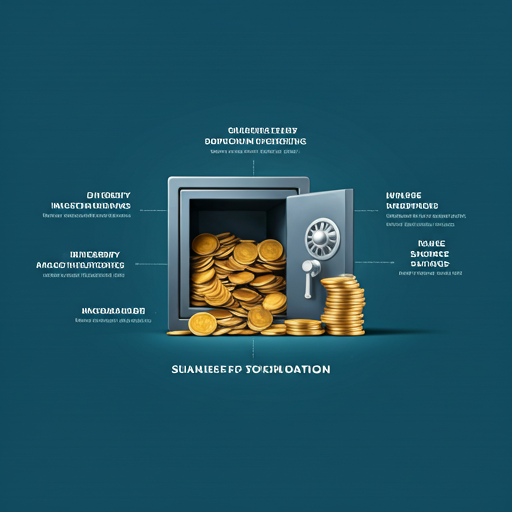Introduction to Global Supply Chain Disruptions
Definition of Supply Chain Disruptions
Supply chain disruptions refer to interruptions in the flow of goods and services . These disruptions can arise from various factors, including natural disasters, geopolitical tensions, and pandemics. Each factor can significantly impact production and distribution processes. Understanding these disruptions is crucial for businesses. They can lead to increased costs and delays. Companies must adapt quickly. This is essential for survival. The consequences can be severe. Are we prepared for the unexpected?
Historical Context and Recent Events
Historically, supply chain disruptions have been influenced by events such as wars, economic crises, and natural disasters. For instance, the 2008 financial crisis severely impacted global trade. This led to significant delays and increased costs for many businesses. Recent events, particularly the COVID-19 pandemic, have further highlighted vulnerabilities. Many companies faced unprecedented challenges. Are we learning from these experiences? Understanding history is vital for future resilience.
Impact of COVID-19 on Supply Chains
Here are 10 trending article titles for a financial website based on the latest news and analysis of financial trends: No input data
Importance of Understanding Supply Chain Dynamics
Understanding supply chain dynamics is crucial for financial stability. Disruptions can lead to significant operational inefficiencies. These inefficiencies often result in increased costs and reduced profitability. Companies must analyze their supply chains regularly. This analysis helps identify vulnerabilities. Are they prepared for potential risks? Knowledge of these dynamics fosters strategic decision-making. It is essential for long-term success.
Key Factors Contributing to Supply Chain Disruptions
Geopolitical Tensions and Trade Wars
Geopolitical tensions and trade wars significantly disrupt supply chains. These conflicts can lead to tariffs and trade barriers. Such measures increase costs for businesses. He must consider these factors in planning. Additionally, uncertainty can deter investment decisions. This creates a volatile market environment. Are companies ready for these challenges? Underctanding these dynamics is essential for strategic resilience.
Natural Disasters and Climate Change
Natural disasters and climate change pose significant risks to supply chains. These events can disrupt logistics and production processes. He must assess potential vulnerabilities in operations. For example, hurricanes can halt transportation routes. This leads to increased costs and delays. Are businesses prepared for such disruptions? Proactive risk management is essential for sustainability.
Technological Failures and Cybersecurity Threats
Technological failures and cybersecurity threats can severely disrupt supply chains. These issues often lead to data breaches and operational downtime. He must prioritize robust cybersecurity measures. For instance, ransomware attacks can halt production. This results in significant financial losses. Are companies investing enough in technology? Effective risk management is crucial for resilience.
Labor Shortages and Workforce Challenges
Labor shortages and workforce challenges significantly impact supply chains. These issues can lead to decreased productivity and increased operational costs. He must address recruitment and retention strategies. For example, a lack of skilled workers can hinder production. This creates bottlenecks in the supply chain. Are companies adapting to these changes? Effective workforce management is essential for success.
Implications for Businesses
Operational Challenges and Increased Costs
Operational challenges lead to increased costs for businesses. These challenges can arise from supply chain disruptions and inefficiencies. He must evaluate his operational processes regularly. For instance, delays in delivery can escalate expenses. This affects overall profitability. Are businesses prepared for these issues? Strategic planning is crucial for minimizing costs.
Impact on Inventory Management
The impact on inventory management can be significant for businesses. Disruptions often lead to stock shortages or overstock situations. He must closely monitor inventory levels. For example, delays in supply can result in lost sales. This affects customer satisfaction and loyalty. Are businesses adapting their inventory strategies? Effective management is essential for maintaining balance.
Changes in Consumer Behavior and Demand
Changes in consumer behavior significantly impact business demand. Shifts towards online shopping have accelerated recently. He must analyze purchasing trends carefully. For instance, increased health awareness influences skincare product choices. This can lead to higher demand for specific items. Are businesses responding to these trends? Adapting to consumer preferences is essential for success.
Long-term Strategic Planning Considerations
Long-term strategic planning is essential for business resilience. Companies must anticipate market changes and consumer needs. He should incorporate flexibility into his strategies. For example, diversifying product lines can mitigate risks. This approach helps adapt to evolving trends. Are businesses prepared for future challenges? Proactive planning fosters sustainable growth and stability.
The Role of Cryptocurrency in Supply Chain Management
Blockchain Technology and Transparency
Blockchain technology enhances transparency in supply chain management. It allows for real-time tracking of products and transactions. He must consider integrating this technology into operations. For instance, each transaction is securely recorded and immutable. This reduces fraud and increases accountability. Are businesses leveraging blockchain effectively? Transparency fosters trust among stakeholders and consumers.
Smart Contracts for Automation
Smart contracts facilitate automation in supply chain processes. They execute predefined agreements without human intervention. He should implement these contracts for efficiency. For example, payments can be automatically triggered upon delivery. This reduces delays and errors significantly. Are businesses utilizing smart contracts effectively? Automation enhances operational efficiency and reduces costs.
Cryptocurrency as a Payment Solution
Case Studies of Successful Implementations
Several companies have successfully implemented cryptocurrency in their supply chains. For instance, a major retailer used blockchain to enhance traceability. This improved transparency and reduced fraud risks. He must consider similar strategies for efficiency. Another example includes a logistics firm that accepted Bitcoin for payments. This streamlined transactions and reduced processing times. Are businesses learning from these successes? Effective implementation can aim significant improvements.
Future Trends in Supply Chain and Cryptocurrency
Emerging Technologies and Innovations
Emerging technologies are reshaping supply chain dynamics significantly. Innovations such as artificial intelligence and machine learning enhance decision-making processes. He should explore these technologies for competitive advantage. Additionally, the integration of Internet of Things (IoT) devices improves real-time tracking. This leads to better inventory management and efficiency. Are businesses ready for these advancements? Adopting new technologies is essential for future growth.
Decentralization of Supply Chains
Decentralization of supply chains is gaining traction. This approach enhances resilience and flexibility in operations. He must consider the benefits of decentralization. For instance, it reduces reliance on single suppliers. This minimizes risks associated with disruptions. Are businesses embracing this trend? Decentralization fosters innovation and efficiency.
Regulatory Considerations and Compliance
Regulatory considerations are crucial for supply chain management. Compliance with laws ensures operational integrity and trust. He must stay informed about evolving regulations. For example, cryptocurrency regulations are becoming more stringent. This impacts how businesses conduct transactions. Are companies prepared for these changes? Adhering to regulations mitigates legal risks.
Potential for Global Collaboration
Global collaboration presents significant opportunities for supply chains. By leveraging cryptocurrency, businesses can streamline cross-border transactions. He should explore partnerships that enhance efficiency. For instance, shared platforms can reduce costs ane improve transparency. This fosters trust among international partners. Are companies ready to collaborate globally? Effective collaboration can drive innovation and growth.
Challenges and Risks of Integrating Cryptocurrency
Volatility of Cryptocurrency Markets
The volatility of cryptocurrency markets poses significant challenges. Price fluctuations can lead to financial instability for businesses. He must assess the risks involved. For example, sudden drops in value can impact cash flow. This uncertainty complicates budgeting and forecasting. Are companies prepared for these risks? Effective risk management strategies are essential.
Security Concerns and Fraud Risks
Security concerns and fraud risks are significant barriers. Cyberattacks can compromise sensitive financial information. He must implement robust security measures. For instance, two-factor authentication can enhance protection. This reduces the likelihood of unauthorized access. Are businesses prioritizing cybersecurity effectively? Vigilance is essential in today’s digital landscape.
Regulatory Uncertainty and Legal Issues
Regulatory uncertainty and legal issues create significant challenges. Different jurisdictions have varying regulations regarding cryptocurrency. He must navigate this complex landscape carefully. For example, compliance failures can lead to hefty fines. This uncertainty can deter investment and innovation. Are businesses aware of these risks? Understanding regulations is crucial for strategic planning.
Adoption Barriers for Traditional Businesses
Adoption barriers for traditional businesses are significant. Many companies lack understanding of cryptocurrency’s benefits. He must address these knowledge gaps effectively. For instance, concerns about volatility can hinder acceptance. This creates hesitation in integrating new payment methods. Are businesses missing out on opportunities? Overcoming these barriers is essential for growth.
Conclusion and Recommendations
Summary of Key Insights
Key insights reveal the importance of adapting to change. Businesses must embrace emerging technologies for competitive advantage. He should prioritize understanding cryptocurrency’s role in operations. For example, integrating blockchain can enhance transparency. This fosters trust among stakeholders. Are companies ready to innovate? Strategic planning is essential for future success.
Strategic Recommendations for Businesses
Businesses should invest in employee training. This enhances understanding of cryptocurrency applications. He must develop a clear strategy for integration. For instance, adopting blockchain can improve efficiency. This fosters better supply chain management. Are companies prioritizing these initiatives? Strategic investments are essential for growth.
Future Outlook for Supply Chains and Cryptocurrency
The future outlook for supply chains is promising. Cryptocurrency will play a vital role in transactions. He should anticipate increased adoption of blockchain technology. For example, this can enhance transparency and efficiency. This shift may reduce operational costs significantly. Are businesses ready for these changes? Strategic planning is essential for adapting successfully.
Call to Action for Industry Stakeholders
Industry stakeholders must prioritize innovation and collaboration. Embracing cryptocurrency can enhance operational efficiency. He should invest in training and resources. For instance, understanding blockchain technology is crucial. This knowledge can drive competitive advantage. Are stakeholders ready to adapt? Proactive engagement is essential for future success.









